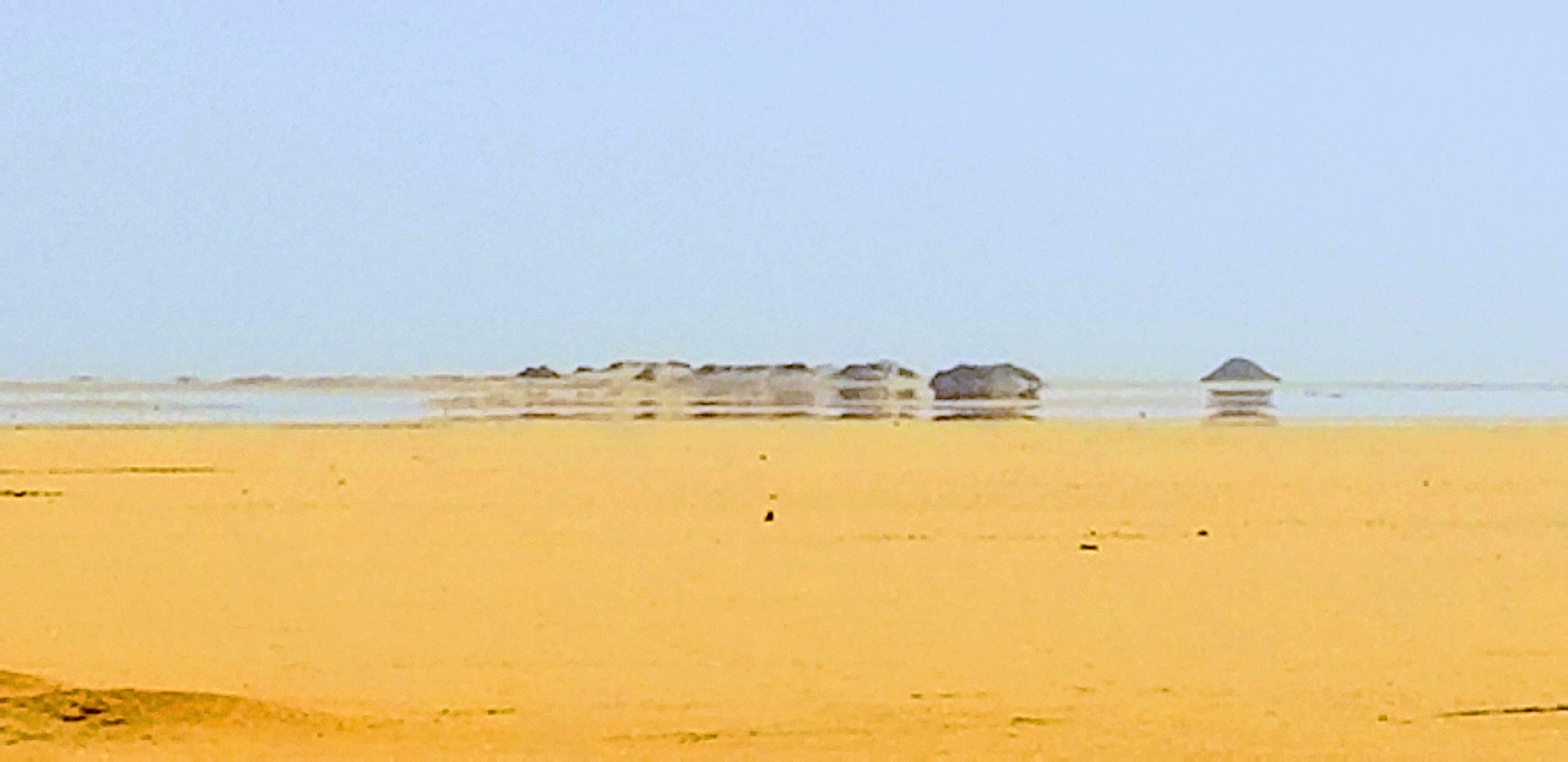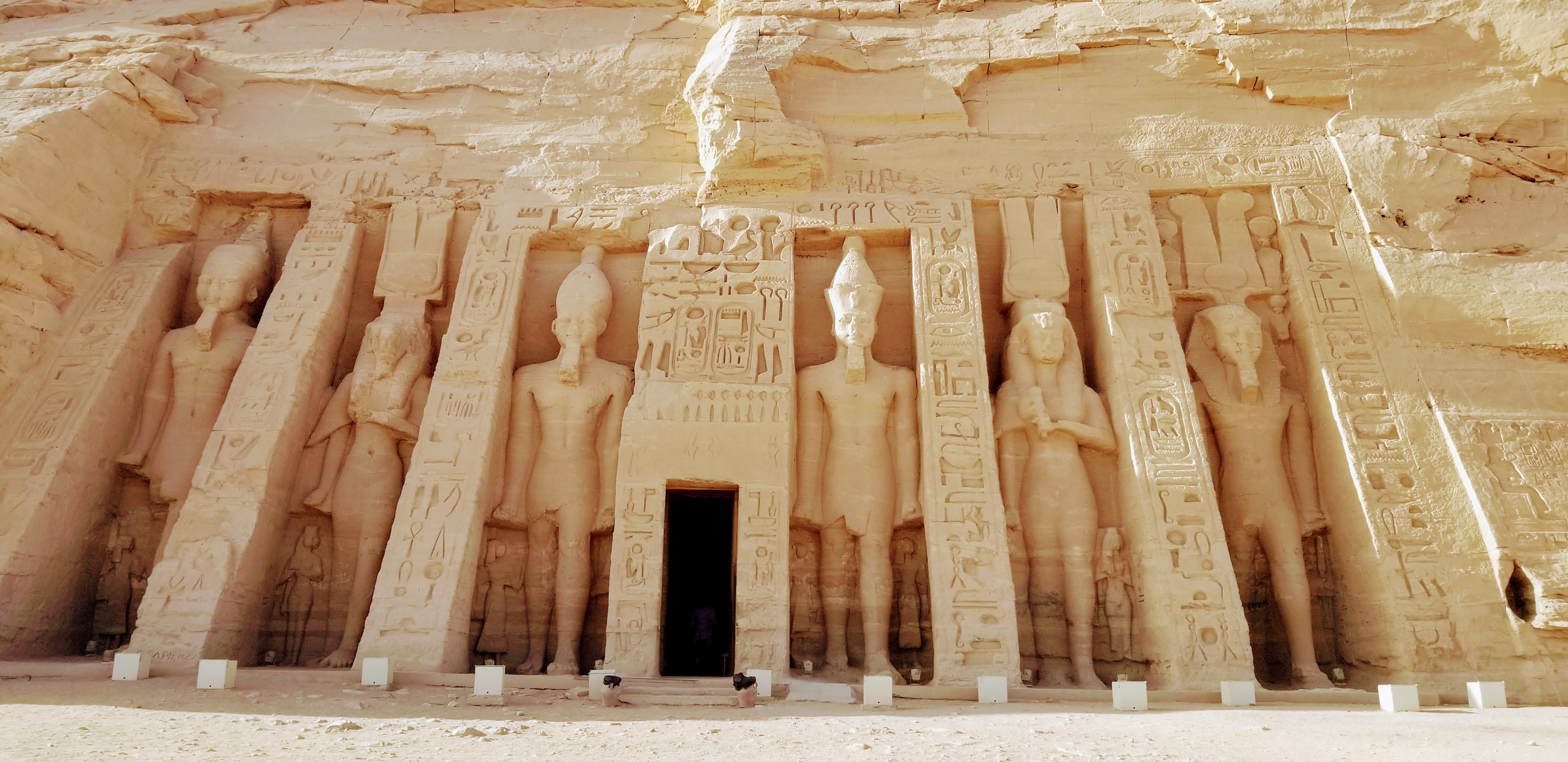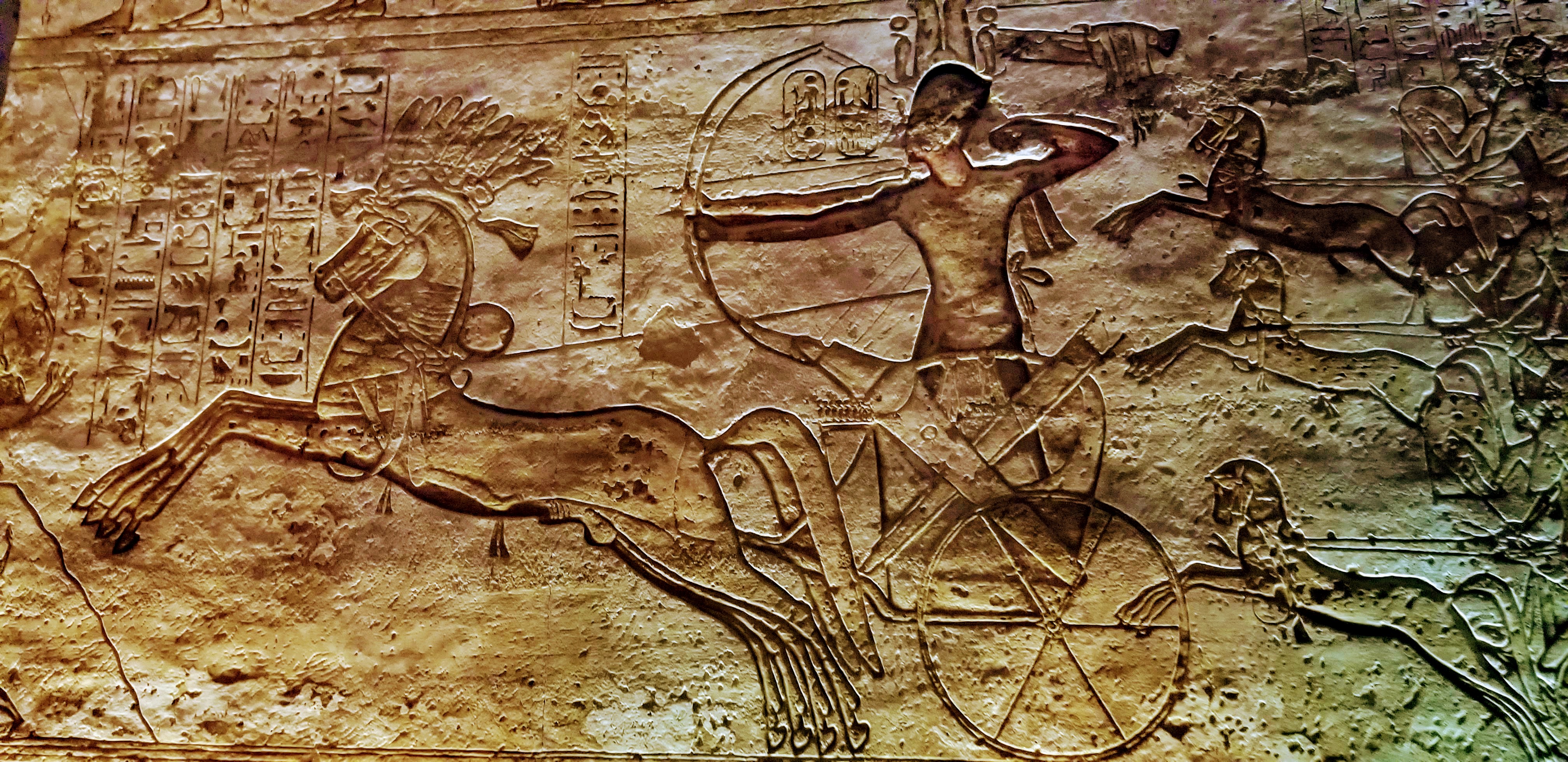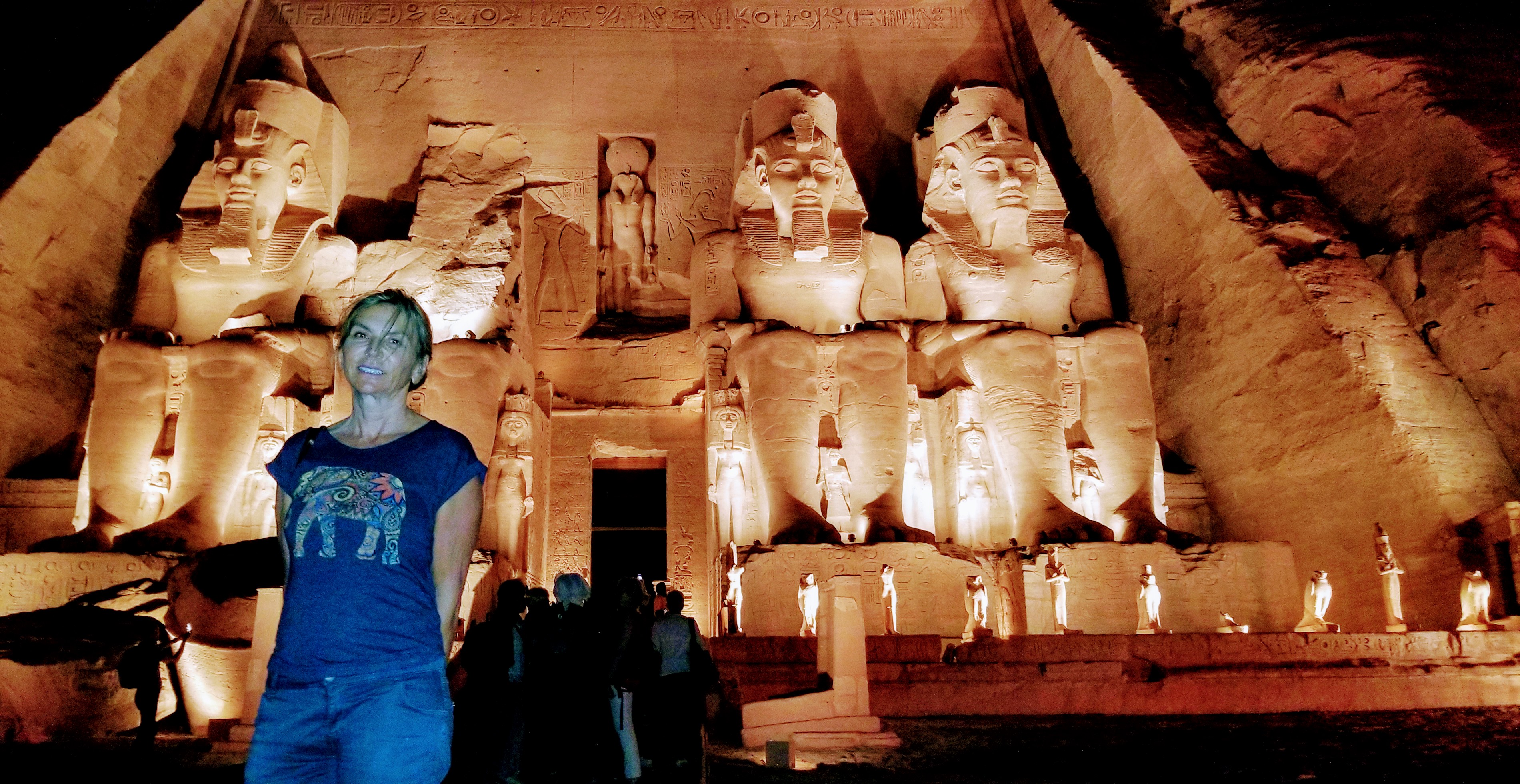
Abu Simbel is truly the magical gem of Egypt. Although it is located in the southern most point of the country – right on the border with Sudan. The journey is really worth it.
From Aswan we arranged for a car to take us the 3.5 hours to Abu Simbel and back the following day (unfortunately the train doesn’t go past Aswan). Our driver was a young Nubian who introduced us to Nubian music (which is great) and dazzled us with his uncanny ability to drive 170 km an hour on turns while eating sunflower seeds. We watched mirages in the desert unfold before us until we swiftly arrived.

Abu Simbel is a tiny town with the most welcoming people. After being barraged in other Egyptian towns it was so relaxing to just walk around and be genuinely greeted by smiling people. Our hotel – Hotel Tuya was a little oasis in the middle of the desert. It is simple and clean and even has wifi if your room is close to reception. They were happy to accommodate my vegan requests for food and Rob had many more choices.

The Abu Simbel temples are two massive rock temples. The complex is part of the UNESCO World Heritage site known as the “Nubian Monuments”, which run from the city downriver to Philae (near Aswan). The twin temples were originally carved out of the mountainside in the 13th century BC, during the 19th dynasty reign of the Pharaoh Ramses II. They serve as a lasting monument to the king and his queen Nefertari, and commemorate his victory at the Battle of Kadesh.
Their huge external rock relief figures have become iconic. Carved out of a sandstone cliff the temples were unknown to the outside world until their rediscovery in 1813 by the Swiss researcher Johann Ludwig Burckhardt. They were first explored in 1817 by the early Egyptologist Giovanni Battista Belzoni.

The complex was relocated in its entirety in 1968 under the supervision of a Polish archaeologist, Kazimierz Michałowski, from an artificial hill made from a domed structure, high above the Aswan High Dam reservoir. The relocation of the temples was necessary or they would have been submerged during the creation of Lake Nasser, the massive artificial water reservoir formed after the building of the Aswan High Dam on the Nile River.

We visited the temples during the day – enjoying the breeze from Lake Nasser and returned for the Sound and Light Show at night. It was impressive to be there at night – but again were the $30/person tickets necessary or a splurge? The show was a history of the temples (you received headphones and a recorder to listen in your language of choice). The “story’ was illuminated on the massive rock faces of the temples.
Although the “show” itself was not that impressive, it was lovely to sit there in the warm air and imagine how the place looked during the time of the Pharaoh’s.

We walked back to the hotel feeling the warm breeze and enjoying the calm serenity of the moment thankful that we made the trek to this lovely town.
Wrap Up – Abu Simbel Egypt
Although our month long trip to Egypt was overall quite frenetic, the visit to Abu Simbel made it worthwhile. As I started this post, no trip to Egypt is complete without a visit to serene and amazing Abu Simbel.
Have you been? Did you enjoy it as much as we did? We would love to hear from you.

1 Comment